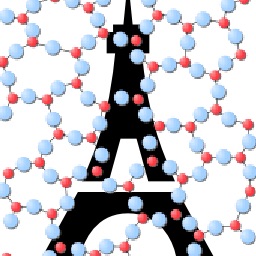Prediction of the Young’s Modulus of Silicate Glasses by Topological Constraint Theory
Understanding and predicting the compositional dependence of the stiffness of silicate glasses is key for various technological applications. Here, we propose a new topological model for predicting the Young’s modulus of silicate glasses. We show that the Young’s modulus is governed by the volumetric density of bond-stretching and bond-bending topological constraints acting in the atomic network. The predicted Young’s modulus values offer an excellent agreement with molecular dynamics and experimental data over a wide domain of compositions (the entire calcium aluminosilicate ternary system) and a large range of Young’s modulus values (from around 80 to 160 GPa).
